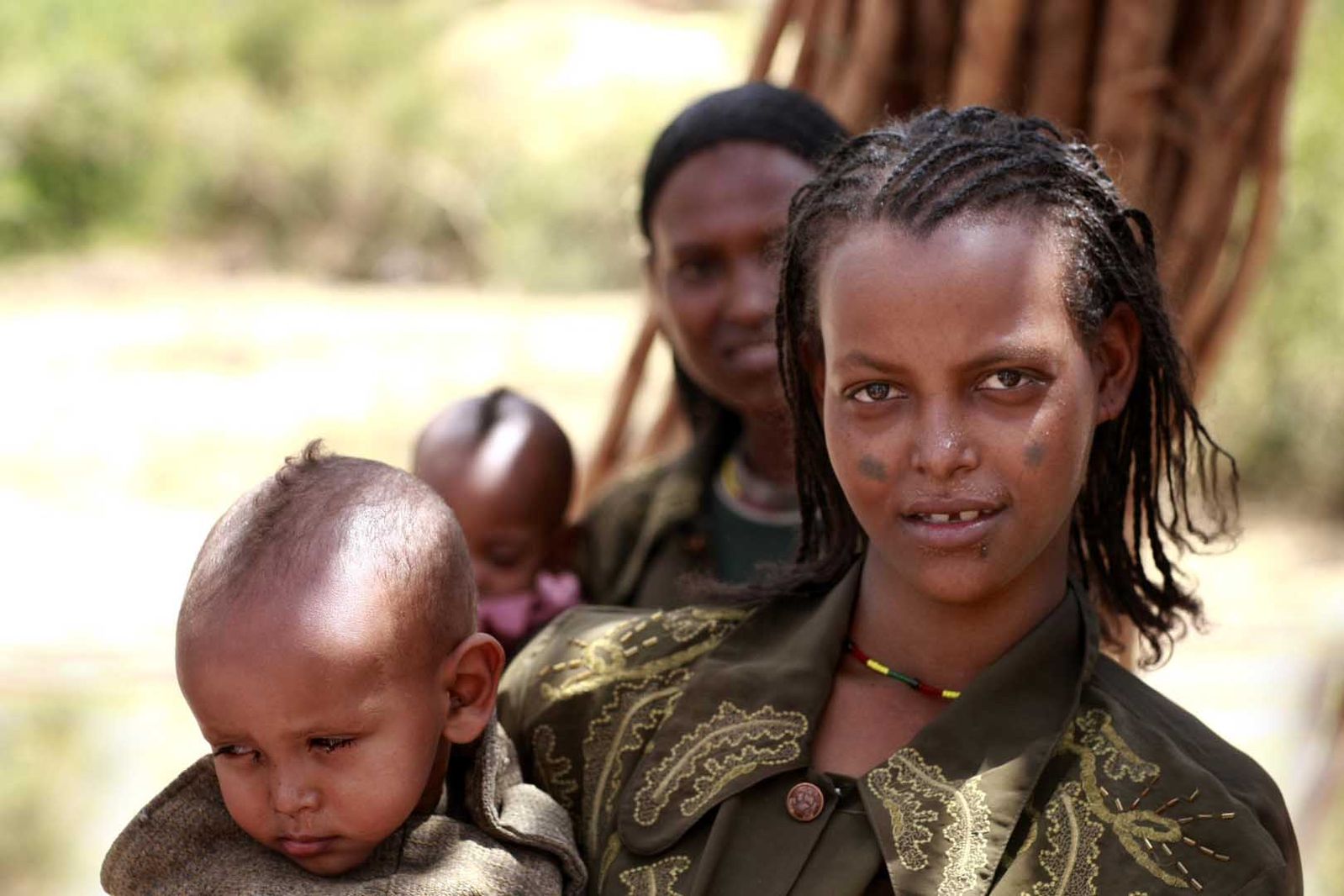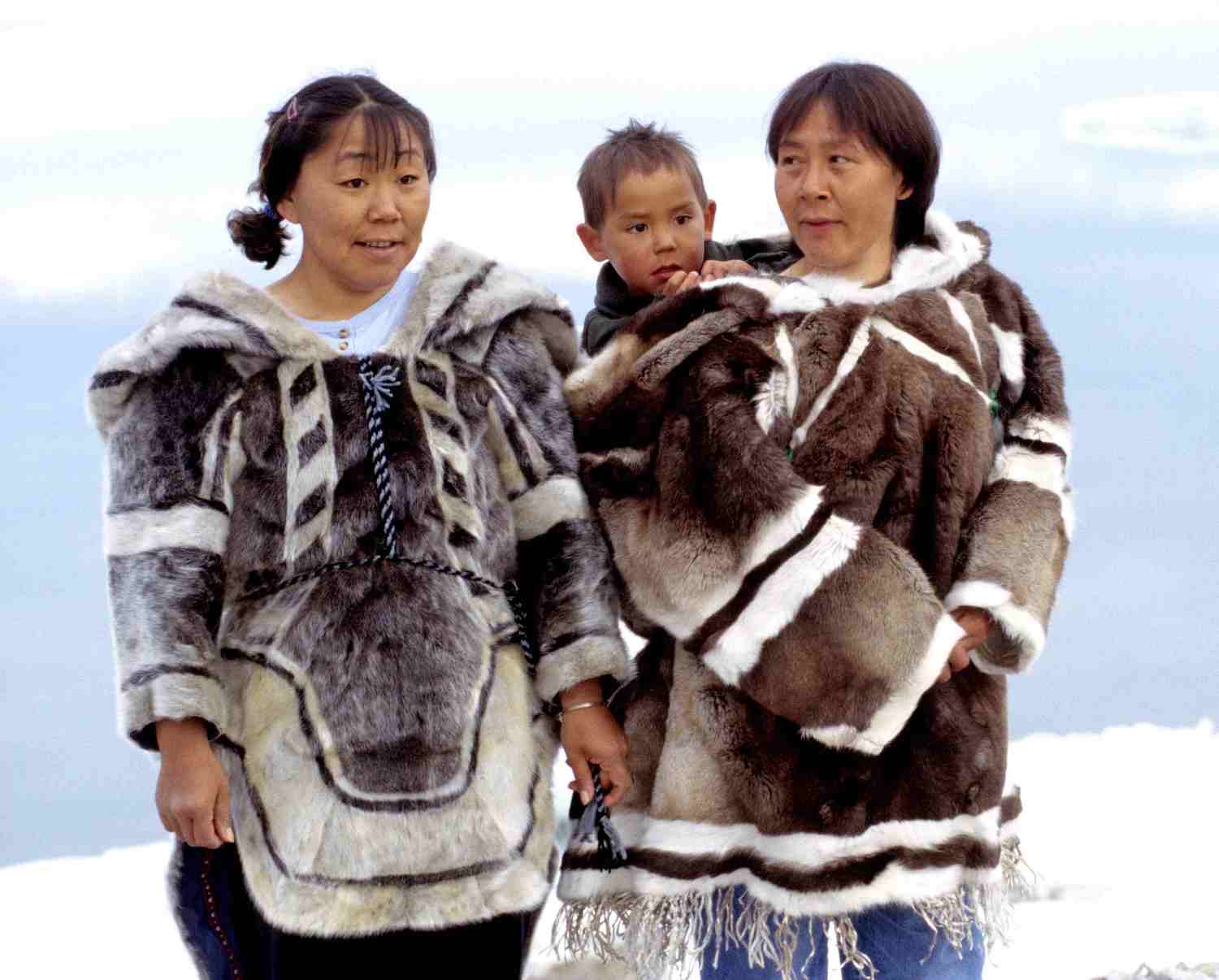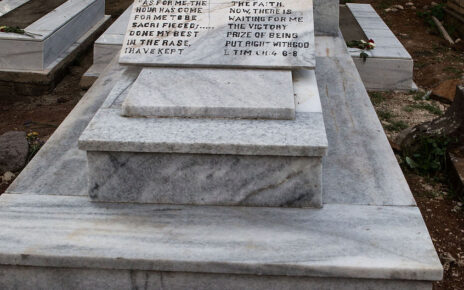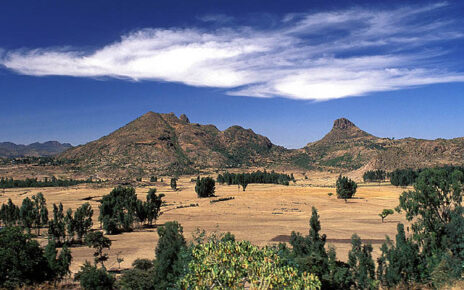The following is the second of a two-part series. The first can be found here.
Docile Ethiopian Bodies
Foucault, in his book, Discipline, and Punish, describes how the human body is the object of different ideologies. Foucault emphasizes the modern way of disciplining technics that made the human body docile. In the modern world, Descartes and modern philosophers and physicians see the body as an object that can be disciplined, improved, and civilized. The new thought that modernity brought to disciplining the body is new “techniques.” These techniques are part of the art that is created to docile and tame the bodies.
These practices and techniques make the body lose its power.[1] Foucault writes, “Thus; discipline produced subjected and practiced bodies, ‘docile’ bodies.”[2] Some of the techniques that Foucault articulated are scholastic theological understandings, education, and pedagogy and military practices. The disciplining methods are the source of domination and colonization; as a result, human beings body act as machines or non-being objects.
Tamed bodies become colonized to the extent that they cannot operate by themselves. In the modern era, the disciplining and the punishing methods work in different systems such as schools, hospitals, and prisons.[3] Docile bodies are without power and agency; they cannot speak and fight for justice and equality because they are tamed.
Ethiopian bodies are tamed by a modern higher education system that creates systemic oppression. In her book Undoing the demos: neoliberalism’s stealth revolution, Wendy Brown employs Foucault’s concept of neo-liberal political rationality (biopolitics) to describe the practical effect of neoliberalism. According Foucault neoliberalism is “art of government,” “reasoned way of governing best,” and “reprograming the liberal governmentality.”[4]
Based on this definition, Brown argues that neoliberalism disseminates the freedom of the people by intersecting its rational governmentality with economic, social, political, and moral values and cultures. According to Brown, neoliberalism vanquishes the homo politicus nature of people and makes them homo oeconomicus, meaning human beings become economized, financialized, and responsibilized capitals.[5]
Education is one of the central phenomena in which neoliberalism demonstrates its rational normative governmentality. The Ethiopian modern higher education system that was imposed on Ethiopians creates a system that makes Ethiopian bodies docile to the extent that they cannot function and operate by themselves.
In Ethiopia, the modern higher education system has a concise history. It was established in the Era of Haile Selassie I in 1950. Its establishment and reform were adopted from European and the United States imperialist higher education systems. Ethiopia did not apply its own modern higher education philosophy, so adopting between the European or American teaching models was one of the leading challenges.[6] .
In the era of Haile Selassie I, Ethiopia’s higher education was used as a political agenda to implement the Emperor’s policies of expansion, as in Foucault’s system of surveillance. However, the system that was created for keeping the sovereignty of the emperor became a place of opposition. University faculty and higher education students resisted the feudal and colonial leadership of Haile Selassie I. However, neither the emperor nor the students succeeded because of the communist regime that came to power.[7]
The Communist government or Derge came to power in 1974 and denied and banned political, religious, and economic freedom. Even though university students started the revolution, their voice was not heard. Many people were imprisoned, killed, and persecuted due to their different political and religious views.
The communist government destroyed all higher education relationships with the United States and other Western countries that the Emperor Haile Selassie I started, and established another higher education relationship with socialist countries.[8] These two political systems have two similar characteristics in the establishment and reform of Ethiopia’s higher education. Both the regime of Haile Selassie and the communist government used higher education to tame Ethiopians for their political agendas.
They imported the Western imperialist and socialist higher education systems without allowing the expression of agency and subjectivity from the Ethiopian people. The Derge fell in 1991, and the current Ethiopian government/EPRDF came to power. The EPRDF education policy is related to globalized neoliberal capitalist values.
When the current government started leading Ethiopia, there was a lot of hope and expectation among Ethiopians. However, as with previous higher education reforms, the new changes in higher education do not address the needs and experiences of Ethiopians. Instead, they impose the global agenda of neoliberalism.
The EPRDF government reforms higher education curriculum and policies by integrating knowledge and poverty reduction. In his article,“Neo-liberal Policy Agendas and the Problem of Inequality in Higher Education: the Ethiopian case,” Tebeje Molla argues that the Ethiopian higher education reform, which integrates knowledge and economic development, could not bring equality and justice that Ethiopians were expecting for decades. Instead, the EPRDF human capital education reform exposed Ethiopians to inequality, because the human capital education system gives priority to the people who can invest and consume.
When Foucault writes about the panopticism system or technique of the modern world, he emphasized that the people who are surveilled do not have subjectivity or agency. “He is seen, but he does not see; he is the object of information, never a subject of communication.”[9] Women and people who have less capital become vulnerable in the competition-oriented higher education process.[10] The neoliberal and human capital higher education system does not give agency for social equality and democracy for the Ethiopian society.
Ethiopia integrates knowledge production or human capital development and economic development. In 1999, there were only two public universities, but currently, there are more than thirty public universities all over the country.[11] However, this reform cannot address Ethiopians’ struggle because the education system does not prepare Ethiopians to be agents to participate in the social reformation process.
According to Brown, neoliberalism as a model of reason and governmentality displaced people from their way of being and knowing and deployed its homo-oeconomicus practices. People imitate those practices without having any subjective authority, meaning they become responsibilized agents who do not have their own normative reasoning but live according to the imposed practices of homo-oeconomicus.[12] They become docile and tame bodies.
Currently, Ethiopia is under great deal of ethnic conflict in different parts of the country. Ethiopians are resisting the neoliberal identity and ethnic educational and political systems that surveilled them for the last twenty-seven years. Ethiopians portray their resistance by crossing their arms which is the symbolic and embodied expression of tamed bodies. Their crossed arms demonstrate their reaction to the imposed taming practices and programs neoliberalism/ EPRDF.
Neoliberal superficial representation focuses on improving the GPA of female students for entry to the universities, but it does not address other injustices and inequality issues that female students are facing due to power dynamics and cultural and traditional impositions. At the same time, it does not change the teaching approaches, pedagogy or curriculum to address the needs of less represented groups.
Rather, Ethiopia’s public higher education focuses on producing human capital in natural science and mathematics departments to tackle poverty and economic problems. As a result, private colleges, and universities, which are perceived to have a low quality of higher education, run most of the humanities and social science fields.
Most of the students who are attending the private colleges are women, so giving less attention to the humanities programs exposed women who are interested in those fields not to get any support from the government. At the same time, careers in the humanities earn the lowest-wage salary in Ethiopia, so women do not get good salaries after completing their degree programs.[13]
The neoliberal global agendas that are imposed in Ethiopia creates a system of devolution. Policies and curriculum or other reforms are not the main responsibilities of the government; instead, the government gives responsibilities of social justice and inequalities to stakeholders or weak institutes. The government transferred its responsibilities of protecting and supporting the disadvantaged groups to the university leadership and other stakeholders; the universities focus on quantitative records rather than addressing the experience of the disadvantaged groups. For example, in Ethiopian higher education reform, most of the universities have gender, multicultural, and diversity offices, but they cannot function, because they do not have enough budget and resources to support the people they are tasked with supporting.[14]
The human capital thought, which integrates knowledge and self-investment denied and superficially represented the social struggles and inequality issues of Ethiopians. Despite the Adwa victory, Ethiopian higher education imposed imperialist, communist, and neoliberal ideologies that made Ethiopians bodies financialized/homo-oeconomicus.
Tamed bodies do not have power to shape their political and social struggles instead they participate in the imposed higher education political and social systems for their existence. They become docile, responsibilized and economized bodies which function and operate in the way they are operated and programmed.
Aida Muluneh’s Photography as a Religious Praxis
Muluneh left Ethiopia when she was a child and lived for 28 years in the Northern hemisphere. She worked for the Washington Post as a photojournalist. She returned to her country a decade ago to face the reality of her origin. Muluneh does not deny her duality or the existential reality that most immigrants are facing: the nostalgia of the past and the unknown and uncertain future. She experienced a lot of personal shame due to the Western media that produces the images of hunger, poverty, and uncivilized Ethiopia. Muluneh said,
I remember when I was a teenager I was so ashamed to tell people that I was Ethiopian that I wished I was South African! Regardless, the stigma of the ‘starving Ethiopian’ made it impossible for me to have any kind of pride in being Ethiopian. But, it was at the end of high school that I realized how images could create or distort realities and so, at the age of sixteen, I began exploring photography.[15]
Anthony Pinn, the editor of Black Religion and Aesthetics, describes how people in the African diaspora use aesthetics to disrupt the imposed representation and signification of black bodies. The contributors of Religion and Aesthetics are not only writing to analyze and expose negative constructions of black bodies, but they are articulate how the African diaspora use black bodies as religious aesthetic and expressions to claim the subjectivity of their own bodies.
Pinn writes, “Attention is also given to the manner in which religion and religious expression challenge the construction of Black bodies to serve the social system and encourage re-evaluation of the proper “space” for and “use” of material Black bodies.”[16] The authors used the body as a means of communication to challenge dominant systems and structures. Their method is different from creed, logos, and doctrinal way of doing religion. Aesthetics such as art, preaching, dance, worship and music are used to show how the body was materially used as a religious praxis to resist imposed ideologies and body colonization.[17]
Luis León in his book La Llorona’s Children defines religion as religious poetics or performance. The Mexican-Americans who live in the borderlands perform their religion in their bodies, because non-white bodies were constructed as indicator of sin and depravation. León writes “Understanding of nonwhite bodies were used to advance strategies of social control, which were though to exist outside of language, in state of nature, in a condition prior to language.”[18]
Religion for the colonized nations is remembering and resisting. So, borderland religion uses body and place to create, recreate and reshape memory to claim its identity. The borderland people use their diverse and hybrid language, culture, and religious praxis to struggle against oppression and colonization. Religion is not static belief, but people’s everyday movement in art, music, poetry, dance, worship enable them reclaim their religious identity. That is why I call Muluneh’s photography and art work religious praxis, because Muluneh is using her art creativity to resist Ethiopians ideological and body colonization to claim her freedom as Ethiopian women.
Using her art of photography Muluneh disrupts the imposed Western images on Ethiopia and Africa. Her work emphasizes hybridity, presence, and complexity. For example, she presents an exhibition called “the world is 9” in David Krut Projects in 2016.[19] “The world is 9” is an Ethiopian saying meaning there is not perfect reality in the world. This saying displays our brokenness and vulnerability.
At the same time, Muluneh’s photography and art reflect Ethiopian’s diverse culture. She said, “So I came to your house and took photos all of the bad things in your house and make it that your reality.”[20] Muluneh is not praising a perfect image of Ethiopia, which claims we have never been colonized; instead, she emphasizes the present, complex, and vulnerable image of Ethiopians. If we use Aida Muluneh’s photography to look through Adwa, we can see imperfect victory, which is “9”. Defeating Italy at Adwa did not protect Ethiopia from being labeled as an uncivilized and undeveloped nation.
The Adwa Victory was immediately followed by Italian occupation. The world is “9” understanding of Adwa victory would make it clear for Ethiopians that both the romanization and docilaization of their bodies are colonization. Reframing the Adwa victory will expose the isolated, romantic, white-painted, gendered, and docile bodies of Ethiopians so that Ethiopians will be aware of its complexity. Reframing Adwa victory requires presence, hybrid, and complex understanding. Reframing the Adwa through decolonizing religious praxis resists the linear and eschatological-oriented interpretations and impositions of western history.
Conclusion
Even though Ethiopians were able to defend their border, the superiority of whiteness creates psychological, ideological, and imaginary colonization for Ethiopians. I argued that understanding and analyzing how Western discourses interpreted the Adwa victory will enable us to disrupt the perception of Ethiopians that made them deny the existing social, economic, and cultural crises and their connection with colonialism.
Ethiopians bodies became white-painted/male, female/ absent, and tamed bodies that cannot function and operate by themselves. They cannot speak against social and political injustices because imposed higher education systems and techniques tame and colonize Ethiopians. Muluneh paints from her black, female, and Ethiopian location. She paints Ethiopians as black, brown, yellow, green, red, and white. It is not a static identity, but a harmony of Ethiopianness that exists in her paintings and pictures. I want to reframe the Adwa victory through Mulunhe’s art work through which we can shape the material signification and representation of Ethiopian bodies. Ethiopians bodies are 9, hybrid, and complex.
Rode Shewaye Molla is a Ph.D. candidate in the University of Denver and the Iliff School of Theology Joint Doctoral Program (JDP) in the Study of Religion. Rode is originally from Ethiopia. Rode’s research and writing focuses on decolonizing oppressive practices, images, and embodied normative rules and ideologies through an interdisciplinary methodology that at the intersection of postcolonial theory, political and public theologies, intercultural care, borderland, and embodied religious practices.
______________________________________________________________________________
[1] Michel Foucault, Discipline and Punish: The Birth of Prison, Trans. Alan Sheridan (Vintage Books: New York), 134-138.
[2] Ibid., 137
[3] Ibid.,138-139.
[4] Wendy Brown, Undoing the Demos: Neoliberalism’s Stealth Revolution (New York: Zone Books, 2005), 55, 109.
[6] William Saint, “Higher Education in Ethiopia: The Vision and Its Challenges” Journal of Higher Education in Africa/ Revue de l’enseignement supérieur en Afrique, Vol. 2, no. 3 (2004): 83-86, URL: http://www.jstor.org/stable/24486295.
[7] Ibid.
[8] Ibid.
[9] Foucault, 200.
[10] Tebeje, Molla, “Neo-liberal Policy Agendas and the Problem of Inequality in Higher Education: the Ethiopiancase.” Policy Futures in Education Volume 12, no. 2 (2014) 297, http://journals.sagepub.com/doi/abs/10.2304/pfie.
[11] Ibid., 298-300.
[12] Brown,177-178.
[13] Ibid., 301-302.
[14] Ibid., 302-303.
[15] Victoria L. Valentine, “Ethiopian Photographer Aida Muluneh Finds Advantage in Creating and Distorting Reality,” http://www.culturetype.com/2016/04/20/ethiopian-photographer-aida-muluneh-finds-advantage-in-creating-and-distorting-reality/, Accessed 3/9/2018 Apr 20, 2016 • 5:06 am.
[16] Pinn, Black Religion and Aesthetic, 6.
[17] Ibid,7.
[18] Luis D. León, La Llorona’s Children: Religion, Life, and /dear in the US, -Mexican Borderlands (Berkeley: University of California Press, 2004), 19.
[19] Aida Muluneh, “The World is 9” at David Kurt Projects, April 3-16th 2016 https://www.artsy.net/show/david-krut-projects-aida-muluneh-the-world-is-9.
[20] BBC Africa, “How Aida Muluneh is Reframing Ethiopia,” Facebook page, Accessed 3/9/2018.




